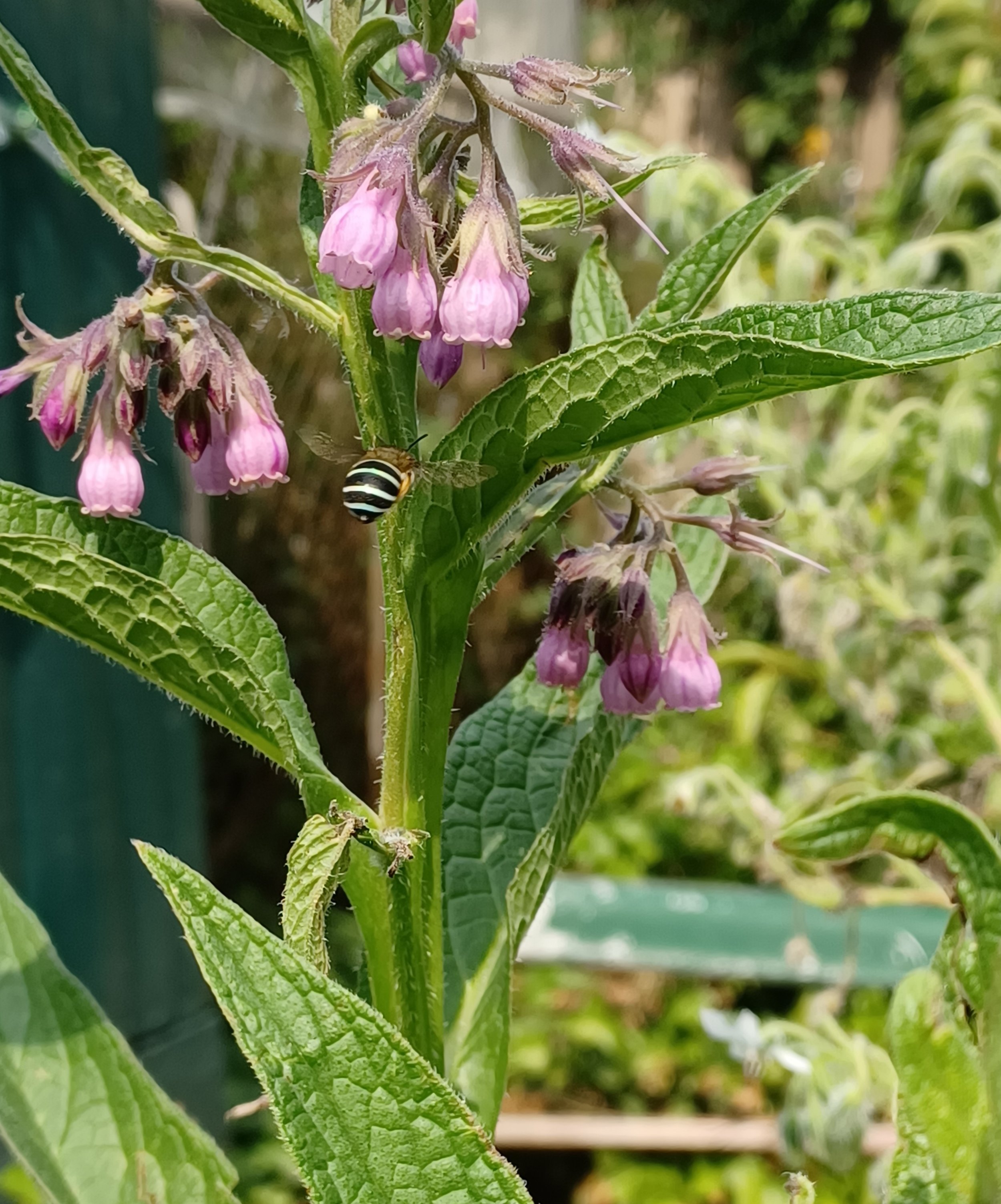
Comfrey
*TOXIC WHEN INGESTED - DO NOT EAT*
Back to index
DESCRIPTION
A vital part of the biodynamic garden, comfrey draws nutrients up from deep in the soil and produces endless juicy, crescent-shaped leaves throughout the warmer months. Add the giant leaves to compost for a boost, or use them as a light mulch. Pretty purple flowers to 1m attract the native blue-banded bee, which buzz-pollinates your food plants. Comfrey leaves and roots can be prepared medicinally to treat musculo-skeletal inflammation. An incredibly persistent perennial that will never quit working in your garden - only dying back in winter, it will be back at the start of every spring without fail.
Legal note: DO NOT take comfrey by mouth, or eat it’s flowers - unlike it’s cousin borage, this plant contains toxic compounds that may cause liver failure if ingested.
POT CARE AND PLANTING
Comfrey is easy to care for in a pot temporarily, but has a powerfully expanding root system which will quickly outgrow most pots - as a result, it can be a little invasive if planted in the wrong spot. Soil level should be just above the start of the lowest leaves.
WATERING
Comfrey is a light water consumer - you can water it a bit less than other things. once per day (early morning or late afternoon is best in summer). Excess water will cause really insane growth, so be conservative if you want to keep it under control a little bit. Can survive on the rain alone at certain times of year.
SUN EXPOSURE
Comfrey likes a lot of sun, but can cope with half to a full day. Be sure to plant comfrey in an open spot that you’re happy to become overrun by tall flowers and dense leaves in coming years.
COMPANION PLANTING
This plant is going to get fairly big - maybe 40cm wide, and up to 1m tall. Comfrey is helpful to the pollination of all fruiting crops, when planted around the garden area and among fruit and nut trees. Make sure you leave some space for everything to expand. Planting comfrey underneath a fruit tree is a great idea, as the comfrey can be slashed at harvest time to allow access, after providing a fantastic pollination service during the spring and summer. The slashed leaves would then form a nutritious winter mulch for the tree.
HARVESTING AND MEDICINAL USES
COMFREY IS TOXIC! Don’t consume any part of this plant by mouth, as it contains high levels of toxic compounds that can cause liver failure. Certain varieties with white flowers can be consumed in small amounts, but this one is only for topical (external) use. The leaves and roots can be pounded and made into poultices which have been used to treat musculo-skeletal inflammation for countless generations. When you harvest comfrey, be prepared for more than you expected! Push a spade vertically into your desired cluster to slice away a chunk of the dense root system - you need to go at least 20cm down to separate the thick, curved, black skinned roots from their neighbours. Cut them away from the soil on at least two more sides using the spade, before gently wriggling the entire clump out of the ground to avoid breaking off too many roots. Don’t worry about the state of the plant left behind, just fil the hole with soil - comfrey is a super-propagator and can grow back from just a single piece of root left behind. Freshly cut comfrey roots start to leak a white latex which quickly turns yellow, so be sure to wash your hands after coming into contact with it - harvesting comfrey root is a job for grown ups only.
SEED SAVING AND PROPAGATION
Comfrey starts to flower quickly, and continues for many months, producing new flower spikes every week, which slowly mature into bell shaped seed heads which face downwards and drop the seeds into the soil as soon as they mature. This can make collecting comfrey seeds very tricky - so I wouldn’t bother. Instead, any time you want to create new comfrey plants, simply follow the instructions above to harvest some comfrey roots. Cut them into pieces at least 1 inch long - there you have new comfrey plants. Place them in soil for a near 100% success rate - or share them with your friends in person or via mail (just wrap slightly longer pieces in some plastic to keep the moisture in). Don’t forget to share all this information with anyone you give cuttings to!




